What is the triagular symbols shown in the image, is it a buffer or some kind of delay?
Asked
Active
Viewed 2,031 times
1
-
2It looks like a non-inverting buffer, but could just be indicating the direction the signal is being driven. In this example it could possibly be to introduce a delay so the clocks are triggered right-to-left rather than all at once – Frog Jun 04 '21 at 09:58
-
Given the title "controlling clock skew" it indicates a buffer, which adds some skew. – Jun 04 '21 at 12:05
-
Please accept an answer as solution once it solves your problem. I have noticed that you are asking questions here, but you never acknowledge any of the answers till now. That's not a fruitful way of using EESE. – Mitu Raj Jun 05 '21 at 12:35
1 Answers
5
Yes, that's the standard representation of a buffer. What you see are clock buffers which are present there to not degrade the rise and fall times of the clock. As typically clock nets have high fan-out, you need high drive strength to ensure that a nice square wave reaches all the registers.
And yes, it introduces a delay in that path. For instance, in your particular example, the clock edge reaches U2 slightly later than at U3, approximately equal to the buffer delay \$\delta\$. This difference is called clock skew.
Mitu Raj
- 10,843
- 6
- 23
- 46
